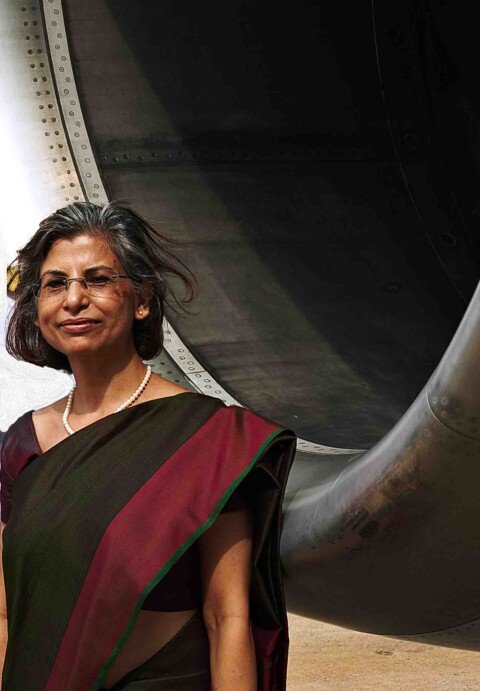Now more than ever, a market-beating strategy will often mean departing from a company’s traditional markets and experience. Doing so prudently will require executives and boards to be explicit about building the assessment and management of risk and uncertainty into the strategy process. Among sources of uncertainty, changes in regulation can put substantial value at risk. Mitigating the negative impact of regulatory change, and capturing the opportunities it creates, requires a company to rigorously map its stakeholder landscape, engage stakeholders with the right mind-set and fact base, and build crack external affairs capabilities and resources. Companies will need to develop a programmatic capability to identify, execute, and integrate attractive acquisition targets. In addition, companies will need to continue to use alliances to access new markets and capabilities in a cost-effective way. SVN Prasad, Head of Supply Chain Management at MG Motor India gives an insight on the complexities to create vicious cycles of capacity influx in times of lower demand, yet still how they have been able to beat the market, as he discusses briefly the disruptions with CARGOCONNECT.
When the COVID-19 pandemic brought the global auto market to a standstill – what were the biggest challenges that emerged for the industry?
The COVID-19 pandemic has heavily impacted the automotive sector posing unprecedented challenges for the industry as a whole. Direct effects included decreasing sales, massive loss, cash flow issues, etc. Apart from that, during the pandemic, managing the excess inventory was the biggest challenge due to sudden stoppage of production. Hiring external warehouse space to safeguard material thereby incurring additional expenditure and demurrages for containers which could not be cleared, added to the woes. Besides, adjusting to the new normal while working virtually with new technologies was one of the complex situations initially that later stabilised. Also, staying in constant touch with employees, suppliers, and other stakeholders called for a rigorous approach.
What does that mean for production – pursuant to that: with demand bouncing back faster than most expectations since the COVID-19 impact caused the Indian market to bottom-out in April-May, why are automakers so far unable to significantly raise new-vehicle inventory?
Industry withstood adversity and bounced back— almost zero production in the month of April’20 to maximum production in the month of December’20.
At present, most of the OEMs are unable to raise new vehicle inventory as they are still struggling to stabilise the production lines. The biggest challenge now is to get imported parts on time. And this is due to the following reasons:
Severe container shortage in China, sparked by blank sailings.
Vessel space shortage due to cartel formed by shipping lines – increase in ocean freight ( from $300 to $3200 per container )
Vessels being re-routed and adding of transhipment ports, resulting in delays.
Shortage of air space/cancellations of flights, increase in air freight costs, etc.
How is IT supporting MG Motor’s supply chain and logistics operations?
At MG, we have a robust production planning system wherein we plan our schedules six months ahead. This plan is shared with our suppliers through an interface called Logistic Executing System (LES) to enable them to plan their production schedules to match our requirements. We have Warehouse Management System (WMS) for part level management and Manufacturing Executing System (MES) for managing manufacturing activities. Added to that, we have developed a robust system in SAP which acts as a centralised system and captures all this data.
We are also able to achieve the fine balance between maintaining minimum inventory while servicing customer demand in a dynamic market. We have been able to do this with LES/SAP systems which ensure that our parts are delivered just-in-time (JIT).
What according to you are the primary mistakes that OEMs and suppliers are still making in management of their supply chains?
Overreacting on market fluctuations and frequent changes in forecast.
Not focussing on reducing operational costs and overall inventory levels.
Inefficient packaging and transportation.
How are foreign OEMs and suppliers doing in India compared to their Indian counterparts?
Foreign OEMs have got decades of experience and they have evolved in quality, design, production, technology, etc. through these experiences. Indian manufacturers on the other hand have very less experience in the cars segment. Naturally, you will find Indian companies collaborating with foreign counterparts and using their experience and expertise to update and flourish their business.
How can we prepare our leadership and beyond to be ready for the new changes? What do you see as the disruptive trends?
I believe, the following trends will impact supply chain and logistics managers as they step into the new future:
Rapid urbanisation- The rate of urban population growth has outpaced suburban growth. Many are flocking to urban areas in large numbers—especially younger workers, or millennials, who view city living as a way to reduce commuting time and transportation expenses. This rapid urbanisation is affecting how consumers shop, what products they prefer and how those goods are delivered. To be successful, companies need to understand the characteristics, preferences and buying patterns of consumers that will result from this shift. Companies need to understand how shifting demographics will impact their organisations’ footprint. Urbanisation will drive more spending in logistics, and shippers will need to get more personalised deliveries to their customers quicker.
Globalisation- The business landscape is rapidly becoming more global. Largely due to improvements in communications, globalisation is dramatically impacting the way business is managed and transacted, even on the most local levels. No area of a business is more affected by the trend to a global business environment than the supply chain. Manufacturing, distribution, sourcing of materials, invoicing and returns have all been significantly impacted by the increased integration of global customer and supplier base, and many companies find that existing processes and technology are not flexible enough for this new business environment. The right supply chain design is critical to managing the changes brought about by globalisation.
Digitalisation- As supply chain networks become more complex, the need for greater and improved supply chain technology solutions has become critical. Newer technologies have enabled the supply chain information worker to innovate, drive cost reductions, improve service and meet customer expectations better than ever. In order to have sustainable improvement in supply chain performance, businesses must have the right balance of investments in organisation, processes, and technology. Emerging technologies such as Blockchain and the Internet of Things (IoT) are helping make supply chains more transparent by delivering the data that is needed in real-time to allow companies to look for process inefficiencies, equipment inefficiencies or other incidents along the way.
Are there any areas within the auto supply chain space that showing significant growth and/or opportunities, such as multimodality, eco-friendly transport, and other new solutions?
Autonomous vehicles, connected vehicles, EVs and shared mobility are disruptive and converge towards technology-driven trends that could change the future of the mobility industry.
In fact, we at MG have introduced Gloster, country’s first Level 1 autonomous Premium SUV. This is our third product after the Connected Car Hector (hybrid variant also available) and Electric Car ZS EV.
Recently, we had also tie-up with Myles as well as Zoomcar for the shared mobility trend that provide first-and-last-mile solutions and can greatly improve quality of life for households, which are generally disproportionately dependent on public transit.







